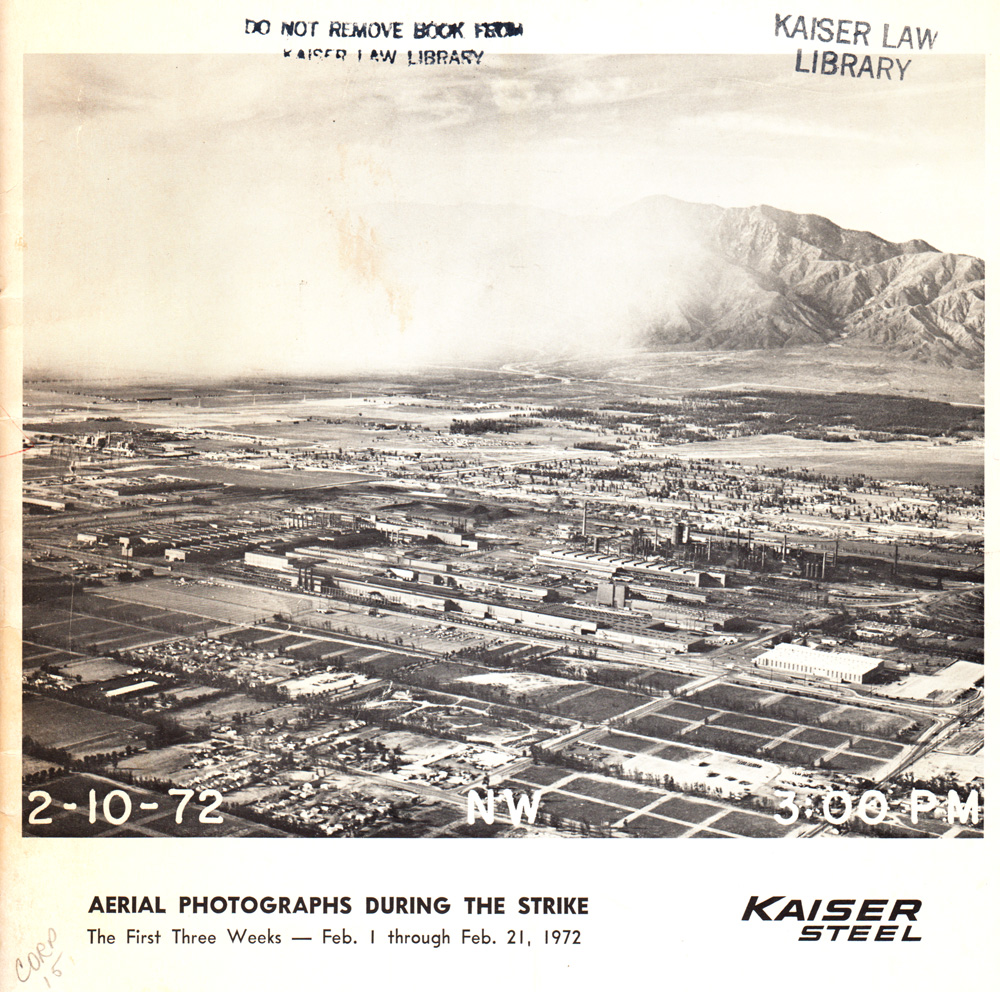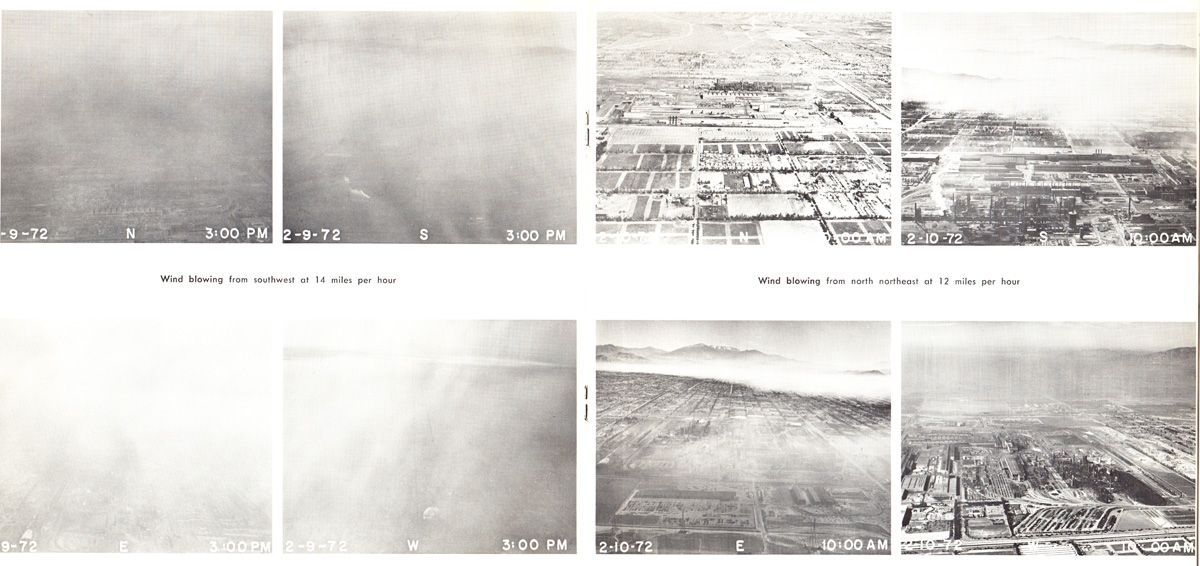1972 and smog
Lincoln Cushing, Heritage writer
[Originally published in Kaiser Permanente's "HIstory of Total Health" November 2013; republished 4/18/2022]
Can heavy industry be a good neighbor? That was one of the challenges facing the Kaiser Steel plant in Fontana, California, in 1972.

Steel for shipbuilding and other industries was in heavy demand during World War II, and no integrated mills (those capable of all phases of steel production, from making iron through rolling shapes) existed on the West Coast.
Henry J. Kaiser was a man of action, so he built a state-of-the-art plant in then-rural Fontana, 55 miles inland from Los Angeles. It fired up its first blast furnace, “Bess No. 1” (named after Kaiser’s wife), on December 30, 1942, and boasted numerous technologies to reduce air and water pollution.
Additional steps were taken over the years to be a model facility, but the plant struggled to adopt increasingly stringent environmental safeguards as the surrounding community developed.
The first national “Earth Day” in 1970 was an indicator of increased national environmental consciousness, and community relations with the steel mill grew tense.
In February 1972 the United Steelworkers of America Local No. 2869 started a 43-day strike that shut down the sprawling facility. Implementing Henry J. Kaiser’s famous proclamation that “Problems are only opportunities in work clothes,” management saw the situation as a way to help dispel one of their most persistent criticisms – Kaiser Steel’s perceived role as the primary source of local air pollution. They embarked on a project to document Fontana’s skies when the “variable” of an operating steel mill was absent.
Here is the explanatory text from the 32-page booklet, Aerial Photographs During the Strike, published by Kaiser Steel immediately following the strike:
And The Smog Stayed On
Even though virtually all authorities agree that less than 15 percent of photochemical smog comes from stationary sources, it is often contended that the elimination of industrial plants in San Bernardino County would make a dramatic reduction in the area's air pollution problem. Kaiser Steel was recently placed in the position where the results of such an action could be observed.
A strike idled the Fontana Plant beginning February 1, 1972. It brought to a halt all production from the blast furnaces, open hearths, oxygen furnaces, and rolling mills.
During the first three weeks of the strike, aerial photographs were taken to record atmospheric conditions in the vicinity of the Fontana Plant. Of course, this is the clearest time of the year and there were many days, and particularly mornings, of good visibility and little or no photochemical smog. On the other hand, most of the days there was a very visible bank of photochemical smog in the area, much of which appeared to be brought by afternoon winds from the west.
This booklet is a collection of pictures taken during the first three weeks of the strike. While it is not possible to make exact comparisons for any given day, it is evident that even with the steel mill shut down, the area suffered some of its worst smog for this time of year.

California author Mike Davis, in his critical book City of Quartz, noted Kaiser Steel’s strike-based environmental documentation in the chapter “Fontana: Junkyard of Dreams” and made these observations:
Many ex-steelworkers still vehemently believe that the Kaiser pollution scare was purposely manufactured by developers who regarded the plant—smog-spewing or not—as a huge negative externality to residential construction in the Cucamonga-Fontana area.
As San Bernardino County's West End fell under the "urban shadow" of Los Angeles and Orange County, developable property values came into increasing conflict with the paycheck role of the mill as leading local employer.
Inevitably the pollution debate reflected these divergent material interests.
RETURN to Docs Populi / Documents for the Public